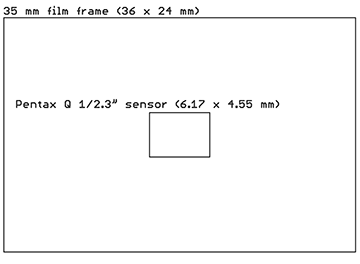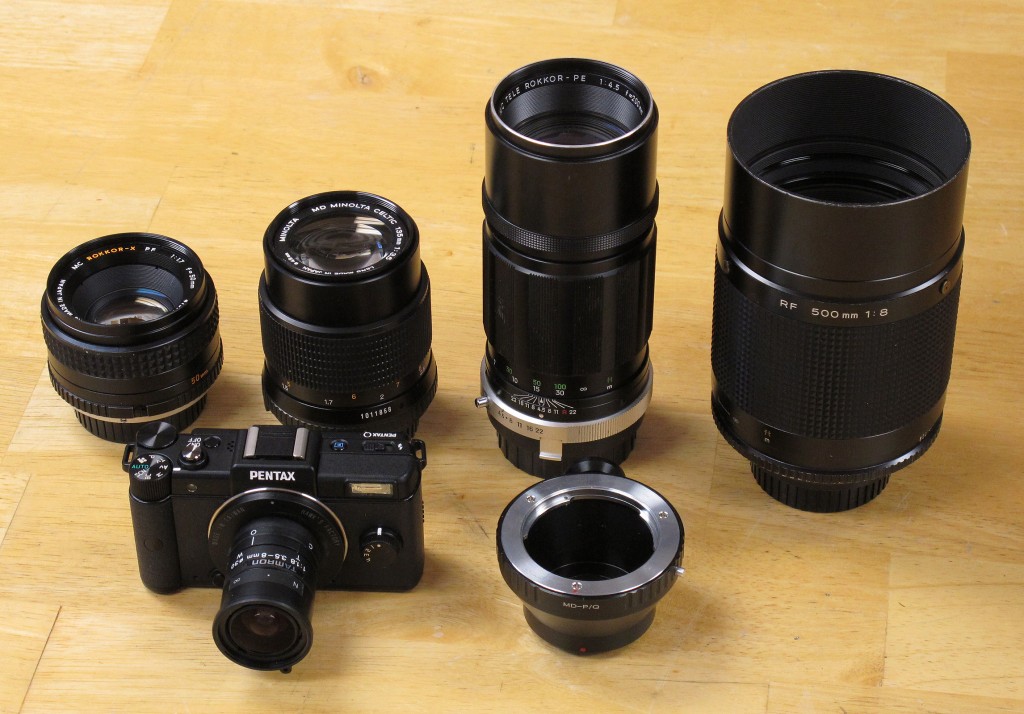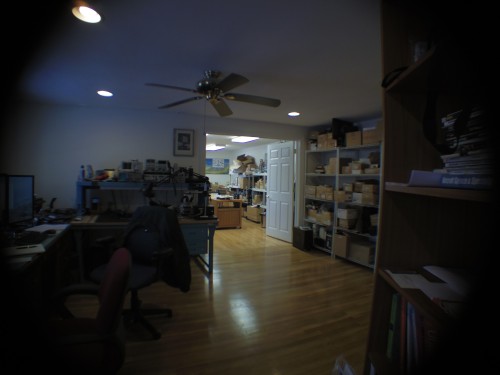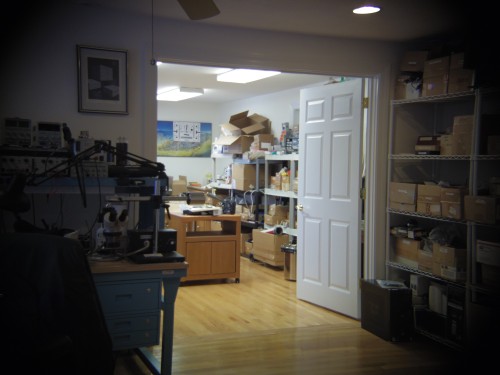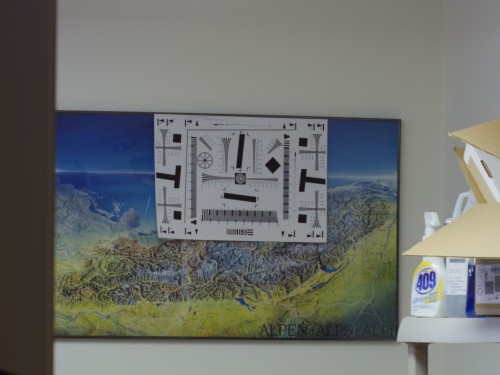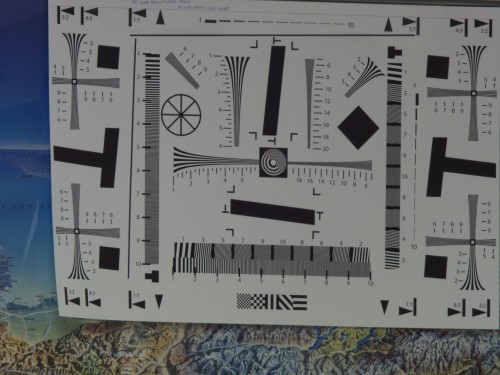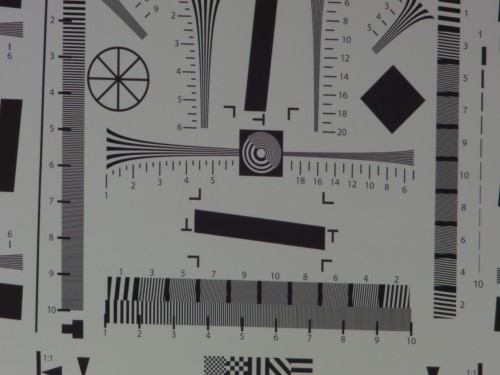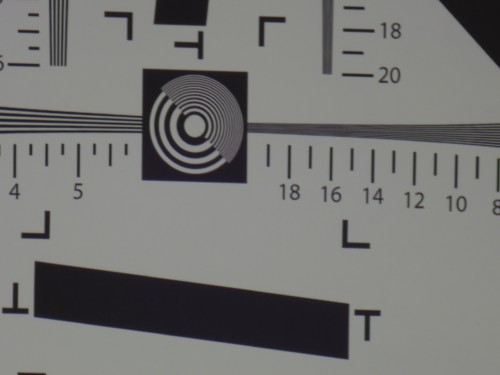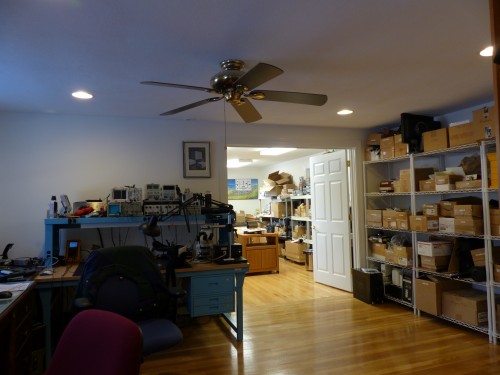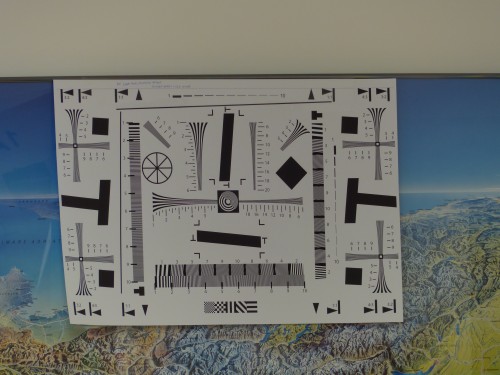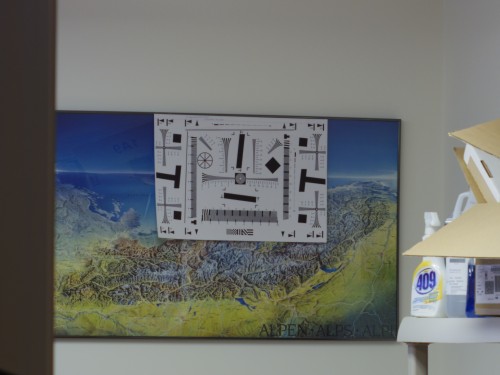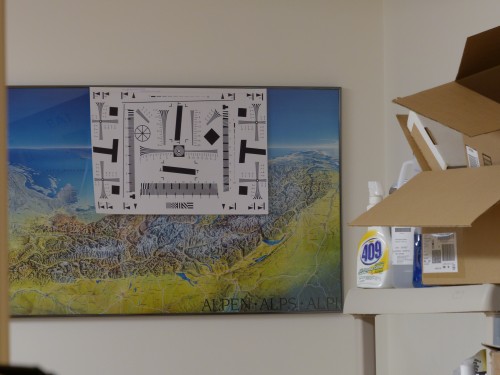Sometimes I get an idea in my head and just can’t get it out.
Modern digital cameras often have tiny sensors compared to 35mm film.
High-quality 1970s “prime” 35mm lenses had a reputation for being very sharp.
When one of those lenses is mounted on a small-sensor camera, the sensor covers only a tiny central region of the 35mm-sized image formed by the lens – essentially the sensor is cropping from the middle of the image, resulting in a telephoto effect.
This gives rise to the “crop factor” of small sensor cameras – at a given focal length, the field of view of the small sensor is much smaller (more “zoomed in”) than on the original 35mm film the lens was designed for.
What, I wondered, would images from a high-quality 1970s prime 35mm lens mounted on a modern small-sensor camera look like? Especially, could I get super-telephoto effects by mounting lenses that were considered long (telephoto) by 35mm standards, multiplied the “crop factor”?
I had to try it.
Above is a diagram showing the relative sizes of a 35mm film frame compared to the 1/2.3″ sensor in the Pentax Q.
The Q has the smallest sensor of any interchangeable lens camera I know of. While this may make it – ahem – less than ideal for general photography purposes (altho to be fair the latest versions of the Q have moved to a larger 1/1.7″ sensor, a huge improvement), that little 6.17 x 4.55 mm sensor does have an immense “crop factor” of 5.6x (comparing effective field of view at the same focal length – the number isn’t exact because the Q’s sensor has a 4:3 aspect ratio, while 35mm film is 3:2).
Off-topic, but other points in favor of the Q are the tiny flange focal distance of 9.2mm – it can mount just about any lens ever made – and Pentax’s excellent UI. I’m not sure there’s a mass market for a camera like this, but it sure can do some things that no other camera can.
So, while a “normal” 50mm lens on a 35mm camera has a 39.6 degree field of view (horizontal), the same lens on the Q sees only 7.1 degrees.
And – here’s the neat thing – a “telephoto” 200mm lens on a 35mm camera sees 10.3 degrees – but on the Q, only 1.8 degrees. That’s the equivalent of an immense 1120 mm lens in 35mm format. And a super-telephoto 500 mm lens sees just 0.71 degrees on the Q – equivalent to 2800 mm on 35mm.
So, I tried it. I got some Minolta MD/MC type prime (non-zoom) lenses on eBay, mainly because they have an excellent reputation and are a bit cheaper than other brands (because they don’t fit many modern cameras), and an adapter for the Q (also on eBay – remember I said the Q can mount almost anything?).
Here’s what I ended up with:
Left to right:
- Minolta 50mm f/1.7 MD Rokkor-X PF
- Minolta 135mm f/3.5 MD Celtic
- Minolta 200mm f/4.5 MC Tele-Rokkor PE
- Minolta 500mm f/8 RF Rokkor-X
From what I can tell online, these are all highly-regarded lenses. The “Celtic” line was Minolta’s cheaper brand, but it seems the economy came from using cheaper materials in the mount, etc. – supposedly it is optically identical the to more expensive “Rokkor” line. And of course, these are all primes – not zooms. Even today primes are generally sharper than zooms; this was even more true in the 1970s before improved manufacturing and computerized optical design.
In the second row you see the Pentax Q with a Tamron 3.5-8mm zoom f/1.8 lens in CS mount, via a “Hawk’s Factory” CS mount adapter (I told you the Q can mount most anything…), and the Minolta MD-to-Pentax Q adapter (just a hunk of metal – no glass).
Then I printed out a (faux) ISO 12233 test chart with a picture height of exactly 12.0 inches (on a sheet of 13×19″ paper) and pasted it on a wall 36 feet 5 inches from the tripod screw. The test chart is marked in units of 100s of line pairs per picture height. (I gave you all the numbers, you can do the trigonometry now if you like.)
I mounted each lens on the Q and took one shot wide open, and then one shot at each full stop short of that. I used ISO 125 (lowest the Q will go), manually focused using focus peaking, turned stabilization off, and used the 2 second self-timer to let any shake imposed by my finger on the shutter to damp out. Exposure was automatic in aperture-priority mode (so the camera just set the shutter speed).
I don’t have any OEM Pentax Q lenses to compare, but I tried the same thing with the (cheapo) Tamron CCTV zoom lens, and with a Panasonic Lumix FZ-200. The FZ-200 is well regarded, and has (as far as I can tell) the same sensor as the Q – 1/2.3″ with 4000 x 3000 pixels. I thought it would be interesting to compare the performance of a “good” lens designed for the 1/2.3″ sensor size.
I also tried a few shots with a Quantaray 7-element 1.4x teleconverter between the Minolta lenses and the Q. The results were disappointing (not noticeably better than you’d get by just cropping and enlarging) and I won’t discuss that further.
I won’t bore you with every shot, but below are sharpest results from each lens (click on any image for the original JPEG from the camera). As expected, the sharpest shots tended to be at f/5.6 plus or minus one stop – any smaller and diffraction blurs the image considerably (the pixel pitch is only 1.5 microns). Caveat: For some of the lenses, f/11 or so was as sharp as f/5.6. I think this indicates that I mis-focused a bit, which harms the Minolta lenses’ results. However this is mainly of theoretical interest, as there is no better way to focus than what I did, at least on the Q.
Above is the Tamon at 3.5mm (wide open at f/1.8). It’s blurry all over, and especially away from the center. It is also badly vignetted – the CS mount lens is meant for a 1/3″ sensor and (as expected) doesn’t cover the whole sensor on the Q. If you click to see the original-size image, you can see the test chart near the center (taped on top of the map). This lens does perform better stopped down, but it’s never great.
This is the Tamron zoomed in as far as it’ll go, to 8mm (again at f/1.8). It’s about the same – not enough resolution yet to read the test chart at all.
Here is the 50mm Minolta at f/5.6 – it was very similar all the way from f/2.8 to f/8.
Above is the Minolta 135mm at f/8 – it was very similar at f/5.6 and even f/11.
And here is the Minolta 200mm at f/8.
Finally, above is the super-telephoto Minolta 500mm reflex (mirror) lens. This lens is fixed at f/8 (there’s no adjustable aperture).
Each lens clearly resolves more detail on the test chart than the one before – putting a 500mm lens on a 1/2.3″ sensor isn’t entirely crazy.
Except for the 500mm reflex lens, all these 35mm-format lenses provided surprisingly good per-picture sharpness. Considering that they were not designed for this huge crop from the center of the image, that’s pretty impressive – these really are excellent lenses (if used as intended for the 35mm film format). On the other hand, we’re only looking at the very center of the 35mm frame – I’ve no idea what the performance would be in the corners.
Here are the shots from the FZ-200 for comparison:
This is the FZ-200 at f/2.8 (wide open). It’s impressively sharp even wide-open.
And here it is zoomed all the way in to 108mm, at f/4. It was just as good at f/5.6 and very close at f/2.8.
These results from the FZ-200 are somewhere between a little and a lot better than the best shots with the Minolta glass. Not too surprising, considering that the Leica lens on the FZ-200 is 40 years newer (although much cheaper) and designed for the 1./2.3″ sensor. Yet, despite that, the 500mm Minolta reflex lens clearly resolves more detail on the test chart than the FZ-200 zoomed all the way in to 108mm. That’s not saying a lot, but it’s something.
Finally, I thought I’d compare the sharpest Minolta lens (the 50mm f/1.7) to the FZ-200. To do that, I framed the zoom on the FZ-200 to match the best shot from the 50mm Minolta the best I could, to be able to compare them directly.
Above is the Minolta 50mm at f/5.6 (same shot as above).
And above is the output from the FZ-200 at f/4, zoomed to match the Minolta as closely as I could. In the center they’re pretty similar, but at the corners there’s no comparison – the FZ-200 wins easily.
That was a waste of time, but fun. If anybody wants the other images (other aperture results) I didn’t post, email me.
